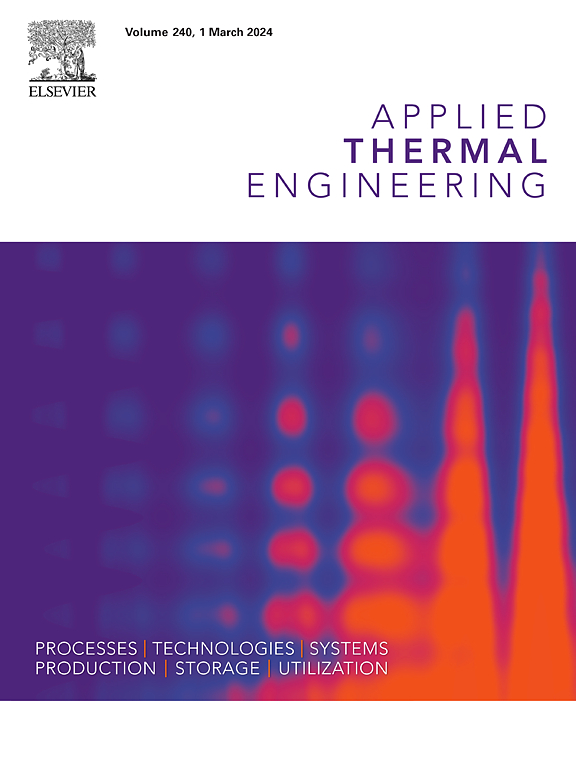Experimental investigation and theoretical analysis of using refrigerant for waste recovery on gas engine-driven heat pump
IF 6.1
2区 工程技术
Q2 ENERGY & FUELS
引用次数: 0
Abstract
Waste heat recovery is a crucial factor affecting the operational efficiency of gas engine-driven heat pump (GEHP) systems. This study experimentally investigates the heating performance of a GEHP unit that recovers waste heat through refrigerant, under ambient temperatures ranging from −25 °C to 5 °C. The experimental results indicate that the unit operates stably, maintaining a Primary Energy Ratio (PER) between 0.8 and 1.2, and exhibits significantly different operational characteristics at ambient temperatures above −5 °C and below −10 °C. Based on the experimental data, the refrigerant flow distribution, energy flow, and heat source proportion are quantitatively analyzed. The results reveal that variations in ambient temperature significantly impact refrigerant flow distribution, which in turn affects the heat source proportion. Furthermore, theoretical calculations of the effects of subcooling and superheating degrees were conducted to optimize refrigerant flow distribution. It is found that the heat absorption capacity of the refrigerant thermodynamic cycle is a fundamental factor influencing the unit’s operational efficiency, primarily used for waste heat recovery by adjusting refrigerant distribution. Consequently, the underutilized heat absorption capacity is identified as the key reason why GEHP units using refrigerant for waste heat recovery exhibit inferior heating performance compared to those using water. With water for waste heat recovery, the heating capacity and PER are over 25 % higher than those of the refrigerant-based system, with a maximum increase of up to 60 %.
求助全文
约1分钟内获得全文
求助全文
来源期刊

Applied Thermal Engineering
工程技术-工程:机械
CiteScore
11.30
自引率
15.60%
发文量
1474
审稿时长
57 days
期刊介绍:
Applied Thermal Engineering disseminates novel research related to the design, development and demonstration of components, devices, equipment, technologies and systems involving thermal processes for the production, storage, utilization and conservation of energy, with a focus on engineering application.
The journal publishes high-quality and high-impact Original Research Articles, Review Articles, Short Communications and Letters to the Editor on cutting-edge innovations in research, and recent advances or issues of interest to the thermal engineering community.
 求助内容:
求助内容: 应助结果提醒方式:
应助结果提醒方式:


